Don’t Cancel, Downgrade: How to Product Change Your Credit Card (& Why You Should)
10 min readIf you want a credit card with premium travel perks, you’ll have to pay up … and many travel cards come with annual fees that can add up in a hurry. While we always encourage travelers to do the math before ruling out a card with an annual fee, if you no longer find value in holding a given card, your first reaction may be to cancel.
But instead of canceling your credit card outright, you should first consider doing a product change. This could mean downgrading (or upgrading) your existing card to another one within the same “card family” – or in some cases, to a entirely different type of card.
For example, *amex platinum* could only be downgraded to another card that earns Membership Rewards points like the *amex gold*. With either of the Chase Sapphire cards, you can downgrade them to one of the Chase Ultimate Rewards-earning Freedom Cards. With Citi cards, you can product change to just about any card that Citi issues – this means you could turn a co-branded airline card like the Citi® / AAdvantage® Platinum Select® World Elite Mastercard® into a more versatile *Citi Premier* or *citi double cash*.
Product changes are great for several reasons: You can avoid unintended negative impacts to your credit score, hold on to some travel benefits (or even gain new ones when upgrading), and maintain the ability to earn valuable points and miles. In most cases, if your current card no longer fits your needs, it’s almost always better to do a product change instead of canceling it.
Let’s dive into some of the key reasons you should product change your credit card – and how to do it.
Want to cancel a credit card? Ask yourself these questions first!
Why You Should Downgrade Instead
If your credit card has a high annual fee you’d rather not pay, and benefits you don’t see yourself using, it’s worth seeing if you can downgrade to a card with a lower or $0 annual fee.
Keep Your Credit Score Intact
The main benefit of downgrading your card is that the bank views a product change as the same line of credit. That means it won’t impact your average age of accounts, and it won’t impact your credit utilization ratio, as the credit will still be available on the new card.
It may seem counterintuitive, but a credit card with a zero balance is actually helping your credit score. Closing an otherwise inactive account can hurt your score in two big ways.
First, when you close a credit card, it decreases the amount of available credit you have to your name. Let’s say you’re thinking of closing an account with a credit limit of $5,000. The moment you do that, your total amount of available credit (across all banks) decreases by that same amount.
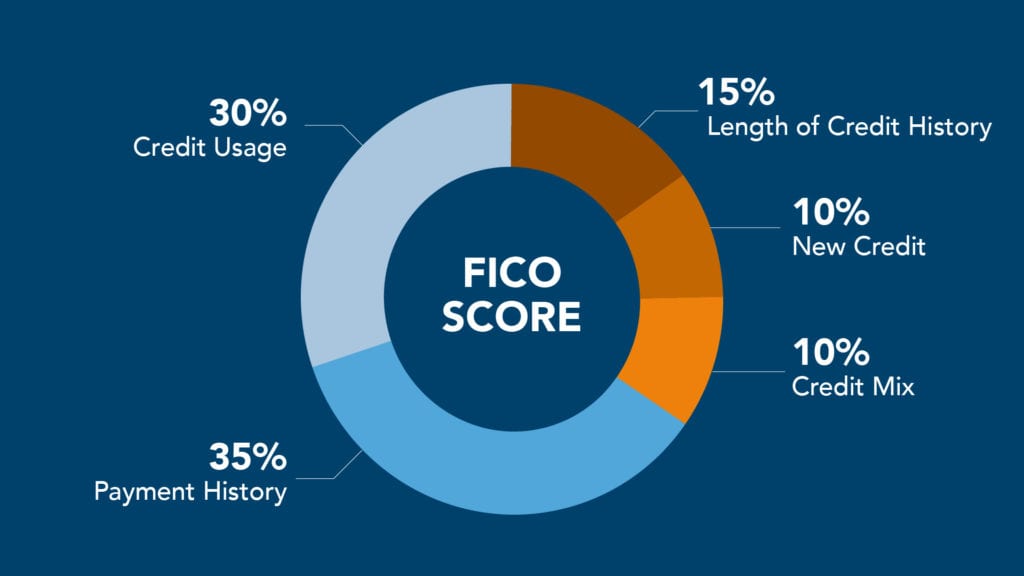

That $5,000 in credit you had is suddenly gone, making any outstanding balances on other accounts eat up a bigger share of your total available credit. This will negatively impact your overall credit utilization – a factor that accounts for 30% of your total credit score.
Closing an open line of credit will also impact the average age of your accounts, another significant factor in your credit score – making up 15% of the total equation. The longer it stays open, the higher the average age of your accounts and the better your score.
Given all that, it might make sense to leave that old account open – even when you’re not actively using it – as the age and the extra available credit will help improve your credit score over time. But of course, your desire to close an account is unlikely to be based solely on how it impacts your credit score – if you do end up closing an old account, most credit hits are temporary.
Just keep in mind: If your card doesn’t have an annual fee, there’s no reason to close the account whatsoever. It’s helping your credit score with no out-of-pocket cost to you. And if your card does have an annual fee, doing a credit card product change can help you avoid it.
Read our guide to understanding your credit score!
Save on Annual Fees
If you want a credit card with travel benefits like free baggage, airport lounge access, and other perks, that means you’ll likely also have to pay an annual fee.
We often tell travelers that annual fees aren’t something to be afraid of: A new card’s welcome bonus offer and suite of benefits can often outweigh the cost of holding the card year after year.
Take for example the Delta SkyMiles portfolio of credit cards. They have card options at several different price points guaranteeing a fit for nearly any type of traveler. If the new $650 annual fee (see rates & fees) on the *delta reserve card* is too much to swallow, instead of canceling, you could product change to the less expensive *delta skymiles gold card* or even the *delta blue*.
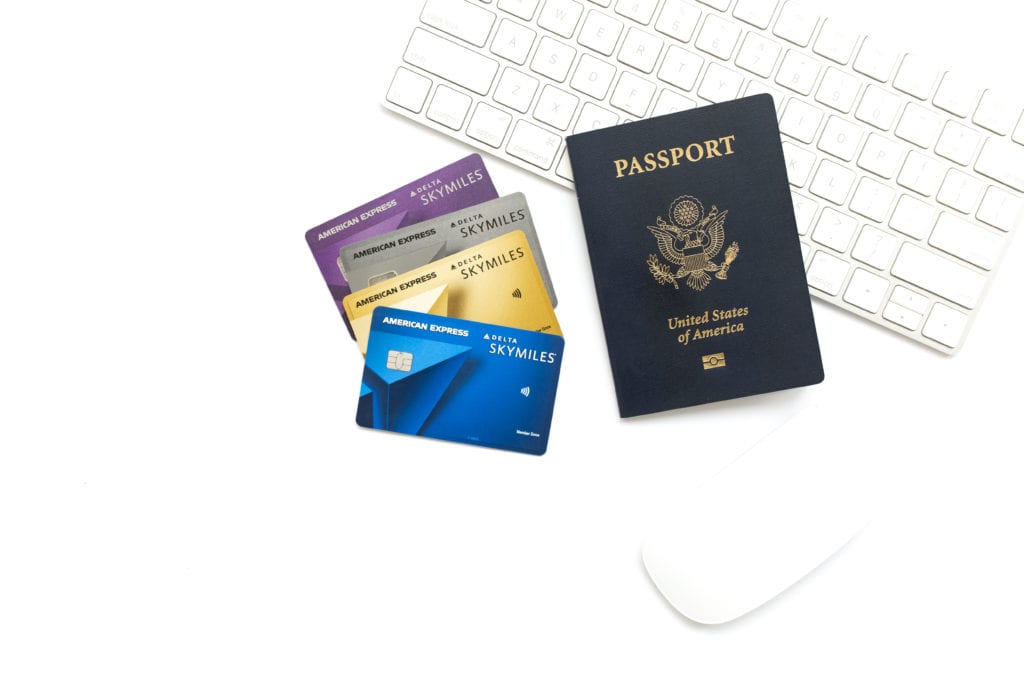

In doing so, you’d lose some of the benefits associated with the Reserve card like the annual Delta companion certificate and Sky Club access. But you’d also be off the hook for that high annual fee and in the process, keep your average age of credit accounts intact and your credit utilization ratio would remain unchanged. Plus, depending on which card you went with instead, you might still have perks like free checked baggage.
Not all cards will be eligible for a product change, but generally speaking, you can always change to a card within the same “card family” – like the Delta SkyMiles or Hilton cards.
Read more: Delta Raises Annual Fees and Adds Perks to SkyMiles Credit Cards
Pay Less and Still Earn Points
The Amex Platinum Card is one of the best travel rewards credit cards on the market today, full stop. But for many, it can be hard to justify the card’s $695 annual fee (see rates & fees).
With a laundry list of perks that not every cardholder will find value in using, one may be inclined to cancel the card come renewal time, to avoid that hefty price tag. However, in doing so you’d be giving up a way to earn valuable Amex Membership Rewards points that can be used to book travel with more than 20 airline and hotel transfer partners.
That’s where the Amex Gold Card comes in clutch. Packed with easy-to-use benefits and solid points-earning, you can easily come out way ahead on the card’s $250 annual fee (see rates & fees). The card earns an unlimited 4x points per dollar spent at restaurants worldwide and 4x points on up to $25,000 of spending (then 1x) at U.S. supermarkets each calendar year.
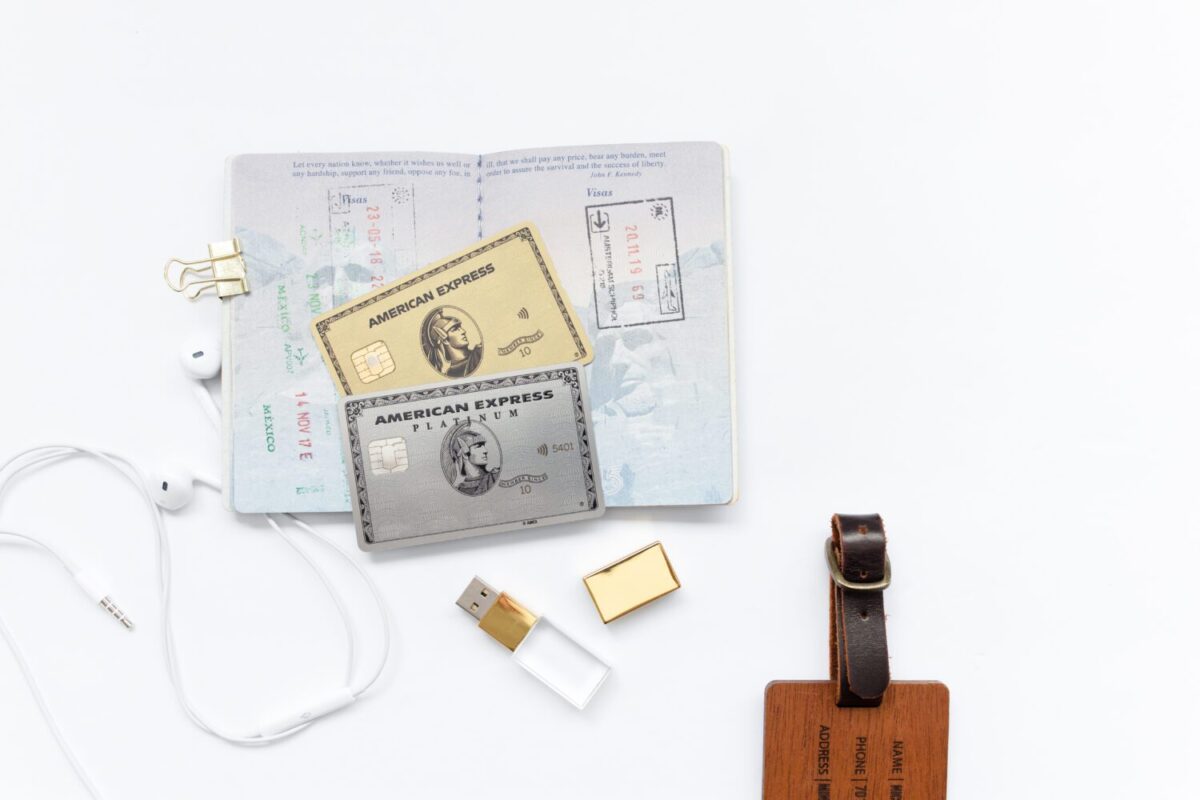

Someone with a *chase sapphire reserve* could get out of the $550 annual fee by downgrading to the $95-a-year *chase sapphire preferred*.
Even better, if it’s been four or more years since you last earned a signup bonus on either card, you’re once again eligible to receive a bonus on a Chase Sapphire product. To do so, you’d need to first downgrade your Chase Sapphire Card to either the *freedom unlimited* or the Chase Freedom Flex. After waiting a few weeks, you could apply for a new Chase Sapphire card and earn even more Ultimate Rewards points in the process.
Whether it’s Amex, Chase, Capital One, or Citi, there’s likely a downgrade path for you to stay with the bank, and who knows … you might even get an upgrade offer down the road.
When to Upgrade?
There are a few situations where upgrading to a different card could make sense. But weigh your options carefully as upgrading to the card you want instead of applying for it could make you ineligible for a generous welcome bonus offer later on.
Premium Travel Perks
If you desire travel perks like lounge access, TSA PreCheck and Global Entry credits, and free checked bags, your no-annual fee card simply won’t cut it.
For benefits like that, you’ll likely need to hold the bank’s more premium, top-tier card. That could mean upgrdaing to the Amex Platinum Card from the Gold card, or the Chase Sapphire Reserve from the Preferred. With Capital One, it’ll mean choosing the *venture x* over the *capital one venture card*.


One of the best reasons for holding a co-branded airline card is for perks like free checked baggage and priority boarding. But you won’t find these benefits on a fee-free card. If you want a free checked bag with your go-to airline, you could get away with paying just $95 after the first year for the *united explorer* or $150 (see rates & fees) for the Delta Gold Card. If you want a free bag with either airline, that means upgrading from *united gateway* or Delta Blue Card, respectively.
Upgrade From the Sapphire Preferred to the Sapphire Reserve
It isn’t possible to hold both the Chase Sapphire Preferred and Chase Sapphire Reserve at the same time, meaning you’ll have to choose one or the other. For many, getting started with the Chase Sapphire Preferred and later upgrading to the Chase Sapphire Reserve makes a lot of sense.


Let’s say you open the Chase Sapphire Preferred Card this year, paying its $95 annual fee and spending $4,000 within three months to earn that standard 60,000-point bonus. Those points are worth 1.25 cents each when redeeming them through Chase. By upgrading your card to the Reserve down the line, those 60,000 points you earned would then be worth at least $900, as each point value on the Reserve card is worth slightly more at 1.5 cents apiece when booking flights, hotels, and other expenses through the Chase travel portal.
When year two with your Sapphire Preferred card rolls around, simply call the number on the back of your card and let the Chase customer service representative know you’d like to upgrade your account to the Sapphire Reserve. Just know that you will need an available credit line of at least $10,000 after having the Preferred for one year to upgrade.
Cards That Pay for Themselves
Many would argue that the $300 travel credits that come with the Chase Sapphire Reserve and Venture X help justify holding the cards and paying an annual fee. So it might make sense to opt for these premium travel cards if the Chase Sapphire Preferred and Venture Card aren’t providing enough value to your travels.
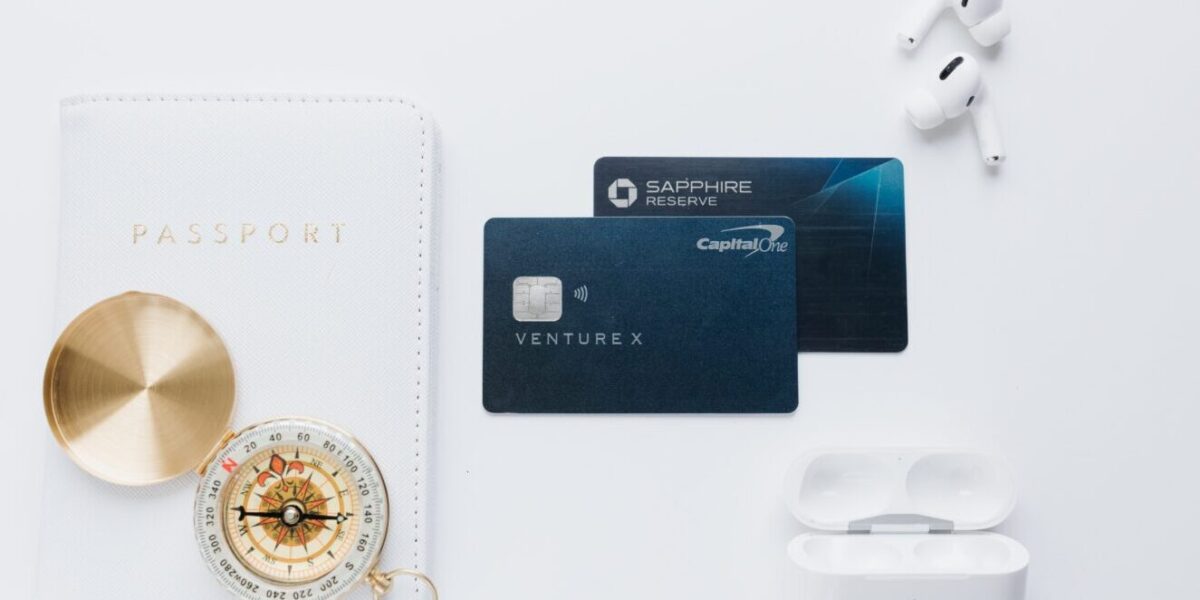

Amex is notorious for adding statement credits as a way to offset a card’s annual fee. The Amex Platinum and Amex Gold Card are perfect examples of this – but if used to full value, it’s possible to come out well ahead by holding either card.
Read more: The Key to Earning Multiple Amex Card Bonuses
Opening a new card on top of one you already have doesn’t always make sense, as you’ll be paying two annual fees. But upgrading to a more premium card means you’ll get many of the perks of the cheaper card plus others, and they can easily cancel out the higher annual fee.
How to Upgrade or Downgrade Your Credit Card
It’s fairly straightforward. Just call the number on the back of your credit card or contact a service representative on your bank portal website via chat to request a product change.
If you’re like me, you’ll do anything to avoid having to call someone unless it’s absolutely necessary. Fortunately, banks like American Express and Citi make it relatively easy. For example, instead of canceling my *delta skymiles gold card*, I recently opted to downgrade to the no-annual-fee *delta blue* (see rates & fees).
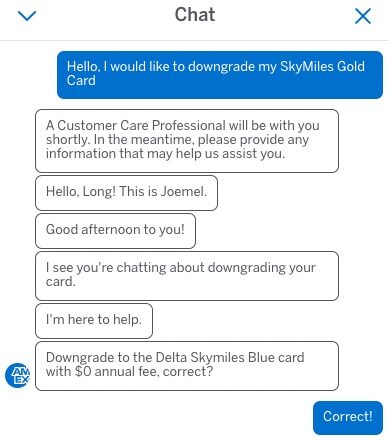

Just be clear about what you want the representative to do for you when it comes to downgrading (or upgrading) your current credit card. If there are any restrictions or barriers to doing an instant product change, the representative will let you know. In this case, I knew which card I wanted to downgrade to but if you’re unsure what your options are, or aren’t aware of the “family” restrictions, just ask the representative what’s possible.
The representative will be more than happy to help you do a product change as this keeps you as a customer for the bank. Make sure you get a confirmation of the product change. After that, cut up your old card and expect the new card to come in the mail.
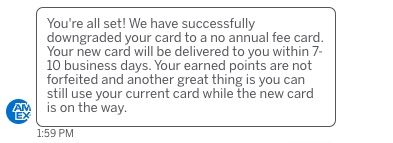

The process is the same over the phone, though you’ll have to go through a series of slower prompts and may potentially be put on hold. But you can follow the same script when talking to an agent on the the phone.
Bottom Line
Before you pick up the phone or chat with a bank representative to cancel your credit card, hang on. There are several questions you should ask yourself first, and one of them is whether upgrading or downgrading to a different card is a better option.
Take a good hard look at what travel perks you want, how much you’re willing to pay in annual fees, and your credit score. A product change could help you fine-tune your wallet for your comfort level.



